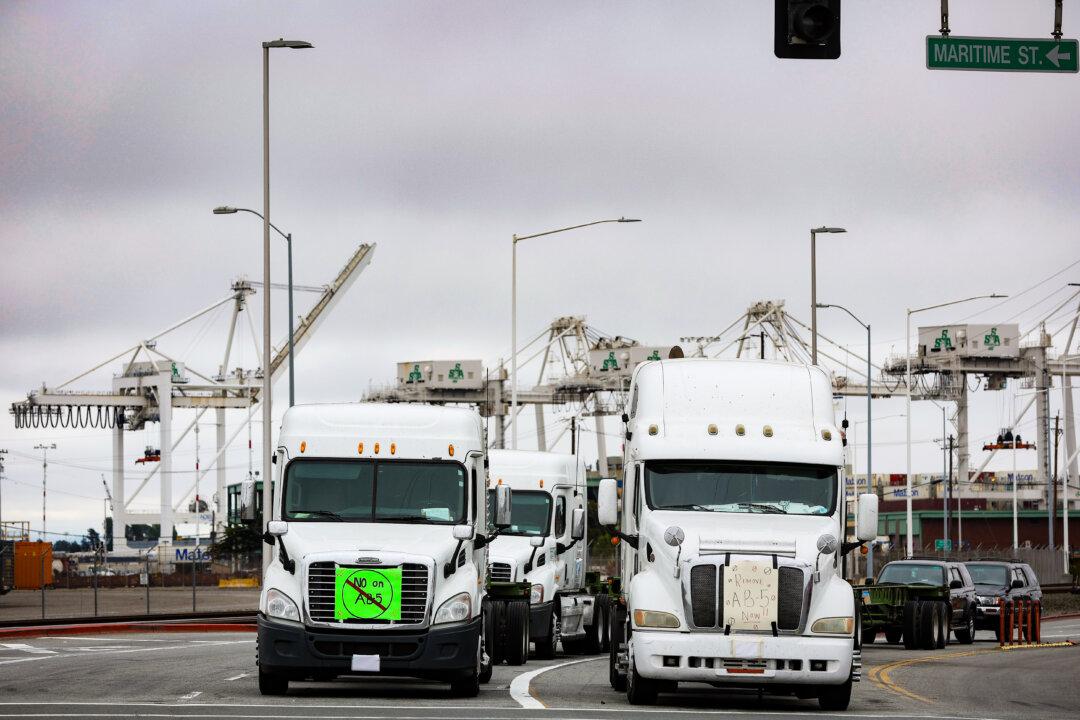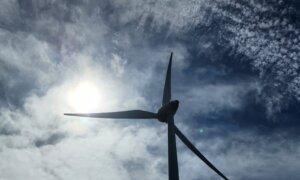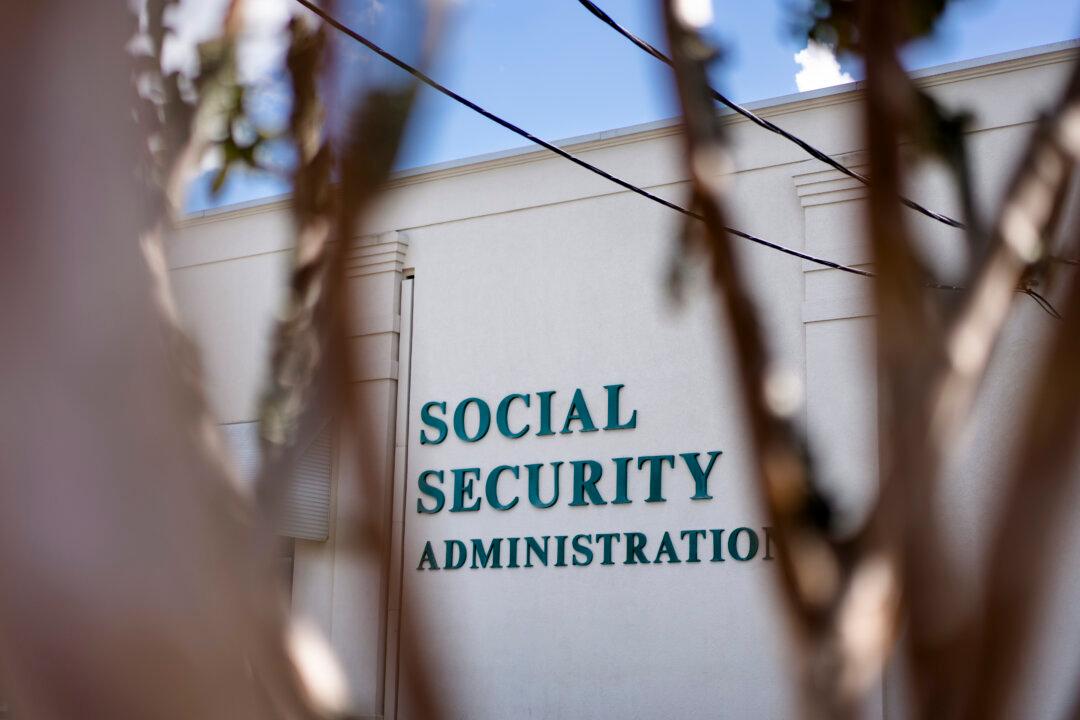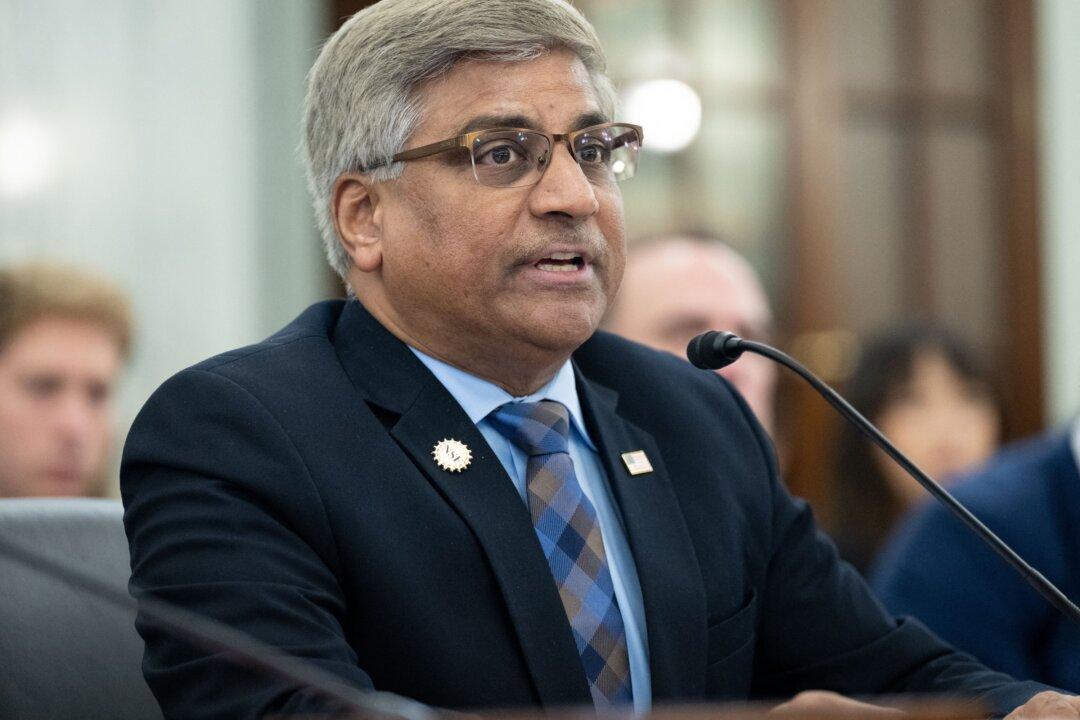The Biden administration plans to spend nearly $1.5 billion to make the American freight industry, responsible for transporting goods all across the country, “zero-emissions” as part of its climate agenda push.
“The Biden-Harris Administration is today announcing a first-ever national goal to transition to a zero-emissions freight sector for truck, rail, aviation, and marine, along with a commitment to develop a national zero-emissions freight strategy,” the White House stated on April 24.
As part of the transition, federal agencies announced three funding programs: a $1 billion program from the Environmental Protection Agency (EPA), a $400 million initiative from the Department of Transportation, and a $72 million program from the Department of Energy.
The EPA program will offer $1 billion, from the Inflation Reduction Act, to cities and states “to replace Class 6 and Class 7 heavy-duty vehicles—which include school buses, trash trucks, and delivery trucks—with zero-emissions vehicles,” the White House said.
As the Biden administration pushes ahead with electrifying freight networks, experts have warned that such efforts may eventually fail or lead to negative economic consequences for the U.S. economy.
Out of the $1 trillion, $620 billion would be accounted for by charging stations. Utilities would have to put up $370 billion to upgrade grid networks so that they could handle the demands of commercial vehicles.
On top of this, the cost of new electric trucks is also a major issue, as they can be twice or thrice as expensive as diesel equivalents. A diesel Class 8 truck can cost about $180,000, and a battery-electric truck costs more than $400,000.
Truckers Protest
The Biden administration’s zero-emission plan for the freight sector trucks comes almost a month after EPA finalized the “strongest ever” greenhouse gas standards for heavy-duty vehicles, a move that attracted strong criticism from trucking organizations.The new standards apply to heavy-duty vehicles such as delivery trucks, refuse haulers, public utility trucks, tractors, and transit, shuttle, and school buses beginning in model year 2027. The EPA claims the standards “will avoid 1 billion tons of greenhouse gas emissions.”
American Trucking Associations (ATA) slammed the standards, warning that such rules could end up forcing fleets to rely on early-stage vehicle technologies that are still unproven.
“The post-2030 targets remain entirely unachievable given the current state of zero-emission technology, the lack of charging infrastructure, and restrictions on the power grid,” ATA President and CEO Chris Spear said.
“A successful emission regulation must be technology neutral and cannot be one-size-fits-all. Any regulation that fails to account for the operational realities of trucking will set the industry and America’s supply chain up for failure.”
The Owner-Operator Independent Drivers Association (OOIDA) called the standards an “assault on small-business truck drivers,” who make up 96 percent of commercial motor carriers. The rule effectively mandates that 25 percent of new heavy trucks sold in the country by 2032 be all-electric, it stated.
“This administration seems dead set on regulating every local mom-and-pop business out of existence with its flurry of unworkable environmental mandates,” OOIDA President Todd Spencer said.
Advantage China
In an interview with The Epoch Times in 2021, former White House deputy national security adviser for strategy Nadia Schadlow warned that the Biden administration’s vehicle electrification program risks making the United States more dependent on its rival China.“Unless the United States and its allies control more of the battery supply chain, the Biden administration’s ability to move towards its [electric vehicle] goals—and, for that matter, U.S. automakers’ ability to reach their EV goals, which are all pretty ambitious—will mean more dependence on China,” she said.
“Encouraging EV adoption while we still rely on China for batteries risks granting Beijing a lot of leverage.”
China controls about 80 percent of the electric vehicle (EV) battery production process, which means that the nation-controlling Chinese Communist Party can slow down or even cut supplies, she noted.
“One could imagine a situation in which China chooses to slow things down to hamper U.S. EV goals. There are plenty of levers in the supply chain it could move,” she said.
They criticized an EPA rule proposed last year that would force up to two-thirds of new vehicles sold in the United States to be electric by 2032.
“At a nearly tenfold increase over current electric vehicle sales, this proposed rule is a clear example of tone-deaf policymaking that favors the geopolitical advantages currently held by China in this market,” they wrote.
“We would be exposing our economy and national security interests if we consciously link America’s economic and transportation stability to the enterprise of a country you yourself described as an economic ‘ticking time bomb.’”







